This Sunday’s European Grand Prix at Valencia marks the start of a triple-header that will decide who brings home the gold at the end of what has easily been one of the most bonkers seasons in memory – not only in MotoGP, but in all of motorsport.
Suzuki rider Joan Mir, who was nearly 50 points off the championship lead after three races, vaulted to the top of the standings for the first time at Aragon and strengthened his position after the second race at the venue.
He is now 16 points clear out front – marking the first time in eight races that the man up top holds a double-digit lead, albeit one that can still be extinguished over a single race with 25 points for the winner each time.
And with six riders covered by 32 points, it is nigh on impossible to predict which way it might go. After Aragon, the likes of Maverick Vinales and Andrea Dovizioso conceded Mir and Suzuki were runaway favourites – but is that really the case?
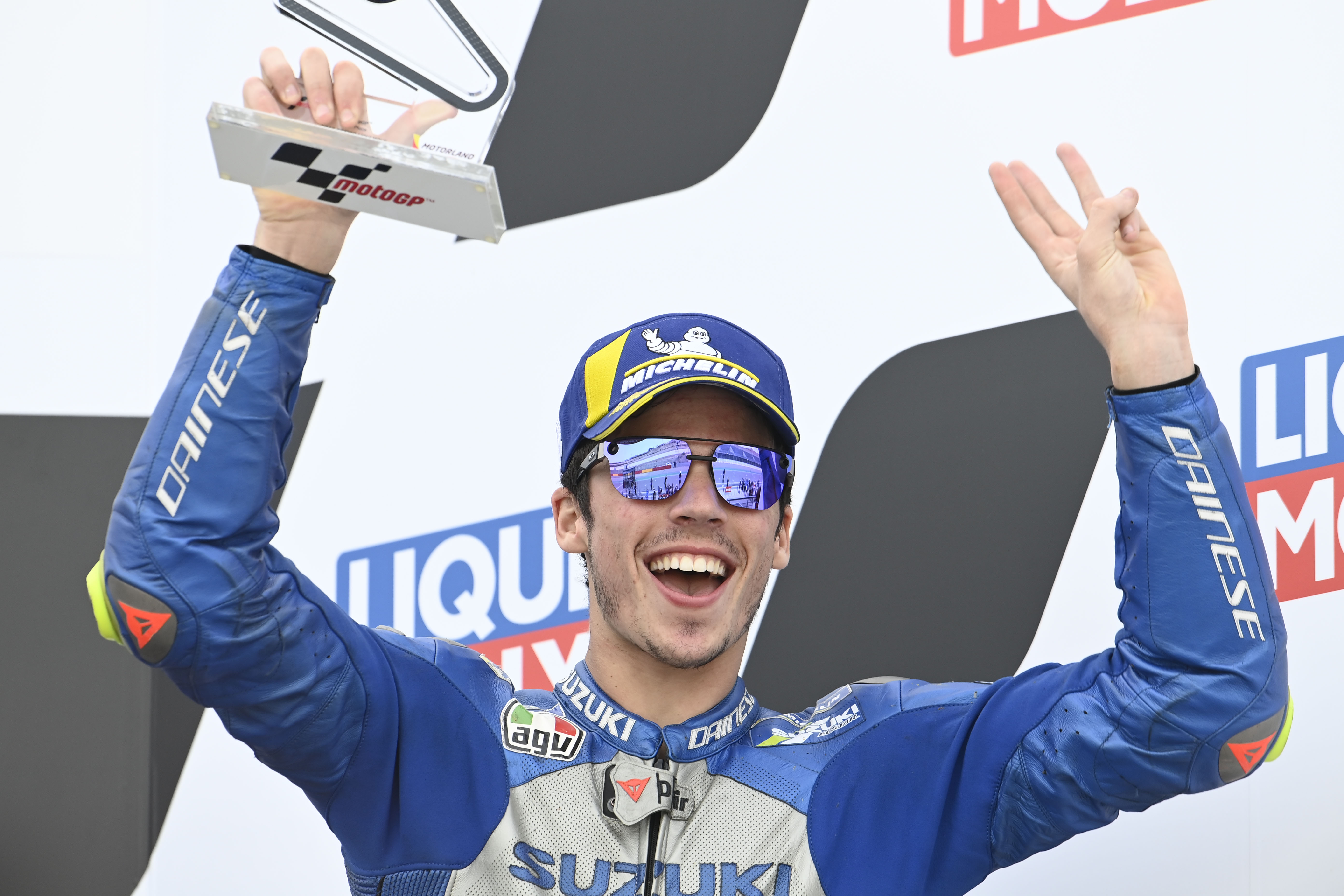
Nobody will be able to say with any degree of confidence one way or another before the cards are on the table at Valencia, or maybe even Algarve, but there are some pre-event ways to get a better idea. After all, there are already 11 races of prior data to mine through.
For the purposes of the below article, we’ve used those 11 races to simulate a realistic – if not necessarily highest-probability – set of results for the final three races of the season. Then we did it again, and again, and again. This is so that we can answer the question – what would it take for Joan Mir to lose the 2020 MotoGP title?
The two models
There’s no perfect way of simulating races and assigning probabilities to outcomes in motorsport because of the sheer amount of variables, external and internal, that impact the result.
Performance is relative and track-dependent, and though the stopwatch is what ultimately quantifies the result, there’s no performance equivalence between laptimes at different circuits, in different sessions or even at different stages in the same session.
In other words, unless you’re a proper genius, you can’t really do the full sabermetrics (which you’re definitely familiar with if you’ve seen the Academy Award-nominated baseball movie Moneyball) with racing. As such, we’re not trying to predict the outcome here, but rather just create a set of results that pass the eye test in line with the rest of the campaign – and that feels like a simpler task.
To do so, we’ve taken the full range of every rider’s gap to the winner in each of the 11 races of the campaign so far, in order to represent their 2020 performance. One of the resulting gaps was then assigned for each rider for each of the three remaining races – Valencia 1, Valencia 2, and Portimao – with a minor bit of normal-distribution variance to minimise the effect of any weird patterns in the data.
For each race, the gaps are ranked to create a new finishing order – but only after each rider passes a ‘retirement check’, i.e. it is determined whether or not they’ve finished the race, with prior 2020 retirement rates presumed to be retained.
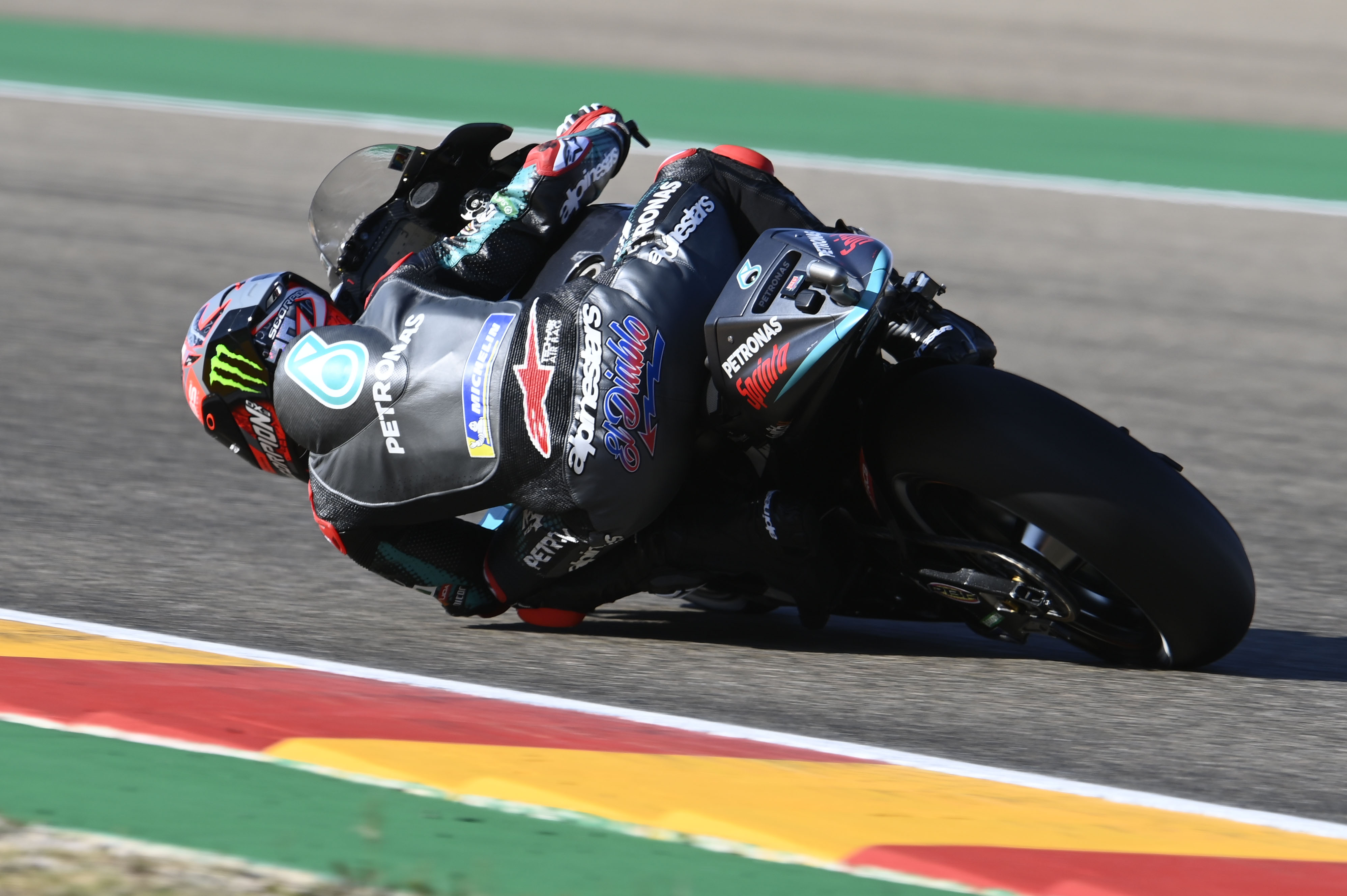
Is this scientific? Unfortunately, it’s clearly not – and the author of this piece is very much expecting a stern letter from his former probability theory professor should he ever stumble upon this piece.
The big issue is that “gaps to winner” are not independent by definition, and thus aren’t a pure metric of a rider’s performance – finishing two seconds behind a full-tilt Quartararo isn’t the same as finishing two seconds behind Dovizioso when he’s spent the whole race conserving tyres and blocking everyone else, for example. Equally, a win by 10 seconds or by 0.1 seconds has the same value for the model.
But, what can you do? (You can do certain things, but they are very much resource and timeframe-dependent.) Ultimately, in MotoGP parlance, the gap to the winner is a fairly reliable indicator of performance, and it’s certainly easier to get a read on than pure race time (which is only at all instructive in comparison to others).
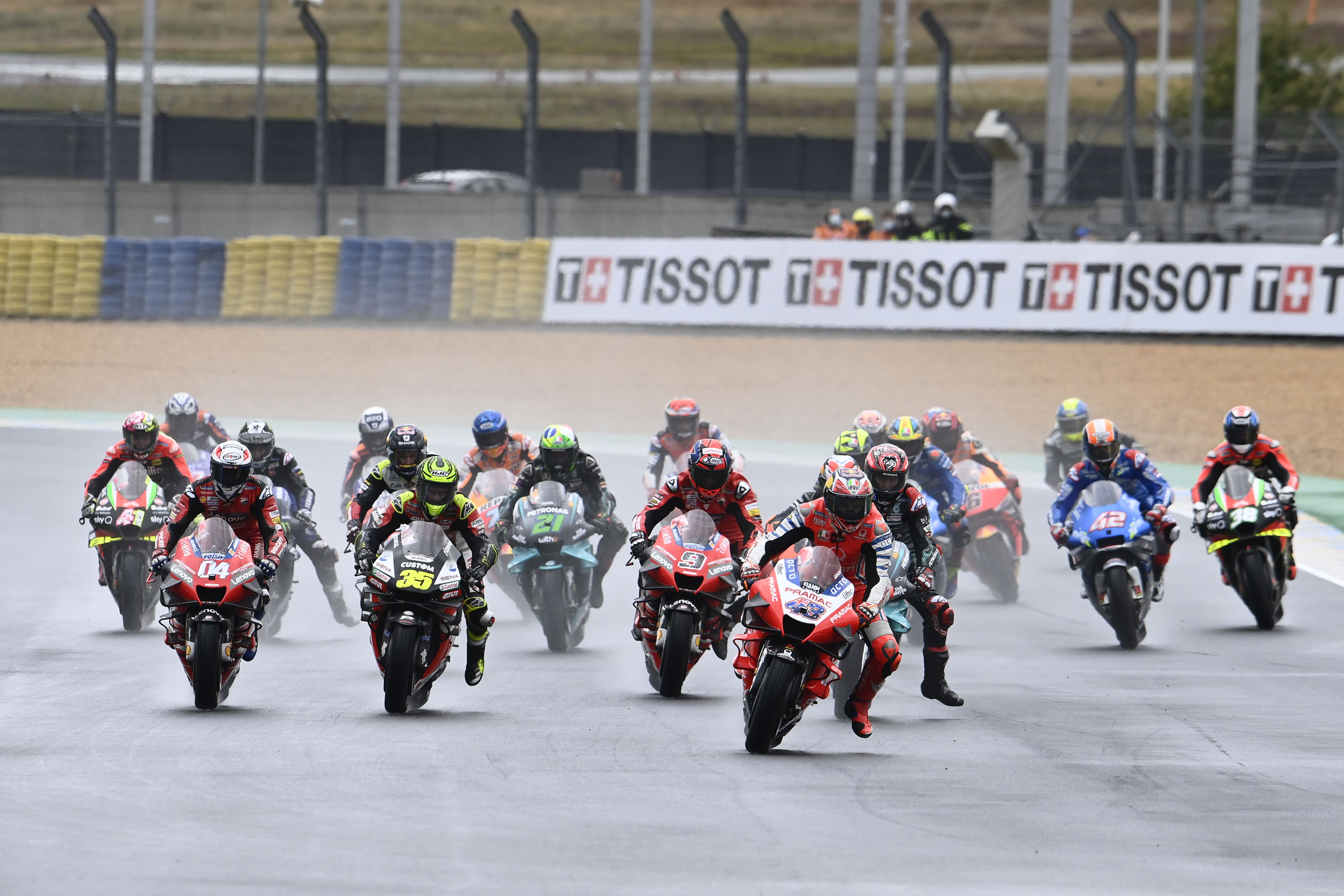
There are several other issues which would make this an undercooked prediction method (accounting for weather, for instance), but for the purposes of pure results generation the big question is dependence. Do you treat Valencia 1, Valencia 2 and Portimao as independent results, meaning a rider doing well in one of those races doesn’t impact the others?
That’s the idea behind our Model 1, and generally the suggestion that results aren’t more strongly correlated between adjacent races seems to pass muster – look at Jerez and Brno. But that’s two different tracks. Valencia 1 and Valencia 2 will be held at the same venue, and – going by 2020 so far – performances in these two weekends will probably be more interlinked than between most.
To account for this, Model 2 – which will generate most of the results for this article – will take Valencia 1 and Valencia 2 results from the same base gap. Both will produce 1000 sets of results.
Below is the rider’s percentage chance of taking the MotoGP title in each model:
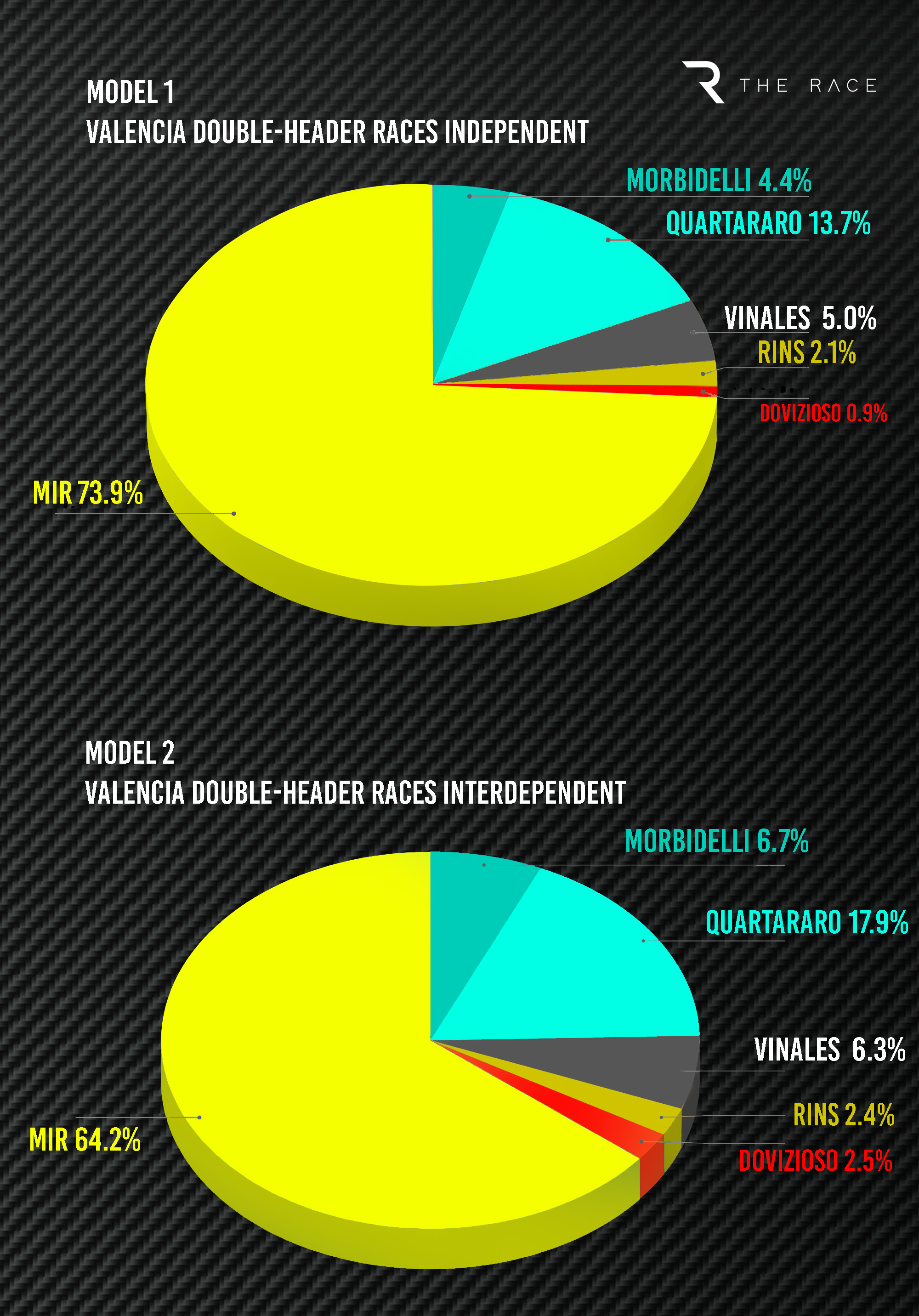
Model 1 awards Mir the title nearly three quarters of the time, and it’s easy to see why. When he’s reached the chequered flag this year, he’s been on average within five seconds of the race winner, which almost always guarantees a handsome points yield.
Meanwhile, all of his main rivals – the Yamahas – have some seriously poor finishes muddying up the waters. This is more or less in line with the MotoGP consensus: which is that Yamahas are either on it or seriously off their game, while the Suzukis are always there or thereabouts.
Switching to Model 2, however, takes Mir down a peg. He’s still champion well over half the time, but is more vulnerable to one of his rivals really nailing Valencia – a la Quartararo and Jerez at the very start of the season.
And both models highlight another potential weakness of Mir’s in the title battle. While he’s winless so far, each of his main five rivals is not, which means he is extremely vulnerable when it comes to tie-breaks. We already know that if Quartararo and Mir finish level on points at the front this season, Quartararo will take the title home by virtue of his three wins – and the same is overwhelmingly likely to be true for the two-time winner Morbidelli.
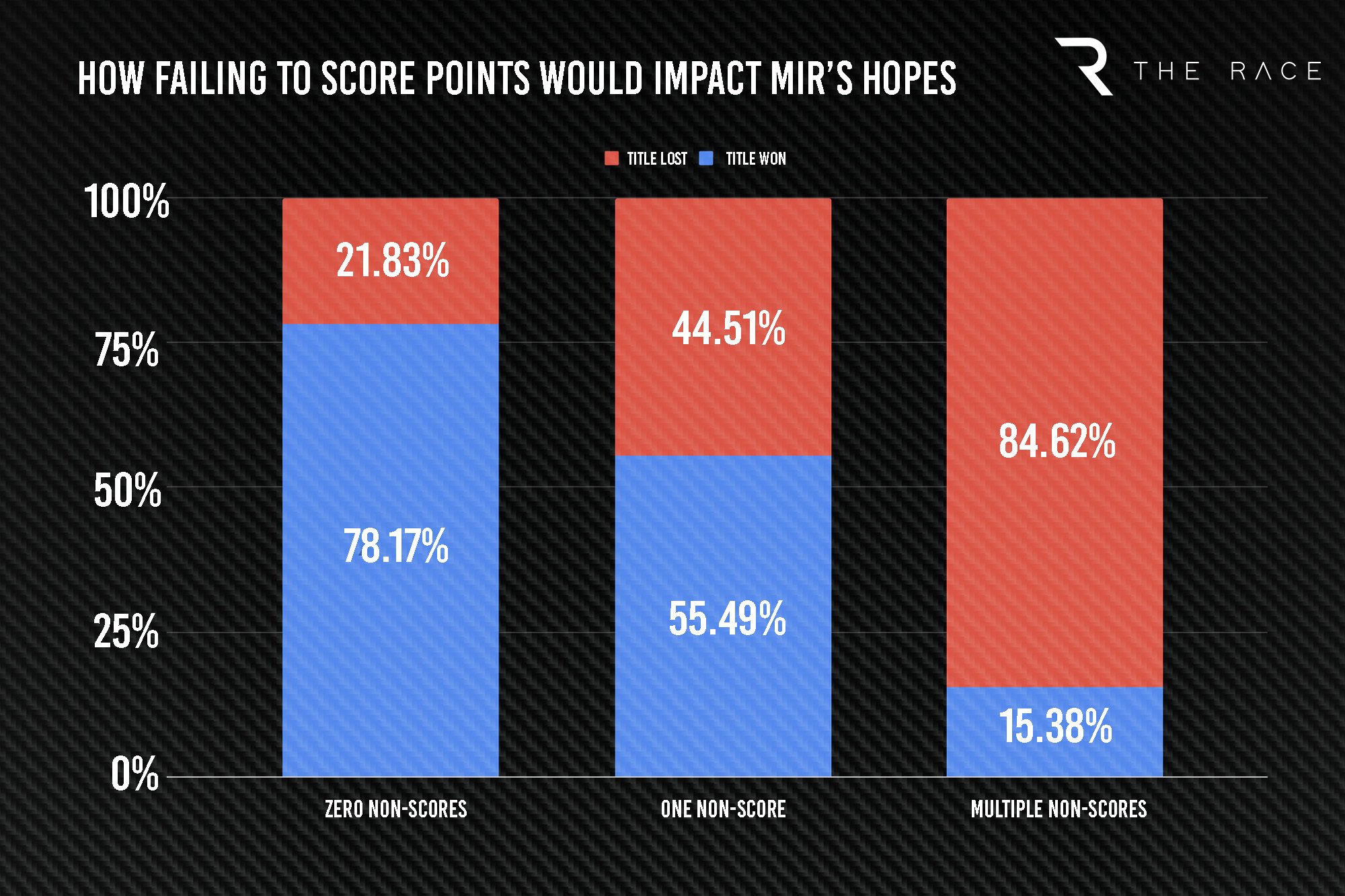
How many points does Mir need?
In the top tier of English football, the Premier League, they talk of a 40-point safety barrier – theoretically, if a team reaches it in a season, it should be safe from relegation. Theoretically you can hit 40 and still be relegated, but in practice that doesn’t often happen.
So is there a 40-point barrier for Mir’s title, a practical if not mathematical mark he has to reach to feel safe? Well, kind of but not really.
From 1000 Model 2 simulations, Mir puts up 60 points in three races on 11 occasions. Ten of those are enough for the title, but one of those isn’t – the doom scenario, a hat-trick of wins by Quartararo. That’s the only way Mir can lose with 60 (which is three second-place finishes, basically), but it’s not implausible. If Mir puts up any more than that, the title is mathematically his no matter what happens.
Ultimately, the 181-point mark seems a reasonable target for the Suzuki rider. It requires him to put up 44 in three races – the equivalent of second place, fourth place and fifth place – or more. Mir clears 180 in almost a third of the cases in Model 2, and 95% of those are enough for him to be crowned champion.
On a brighter note for Mir, the model supposes he can finish with as few as 150 points (say, one fourth place and two retirements) and still take the title. It’s been that kind of season.
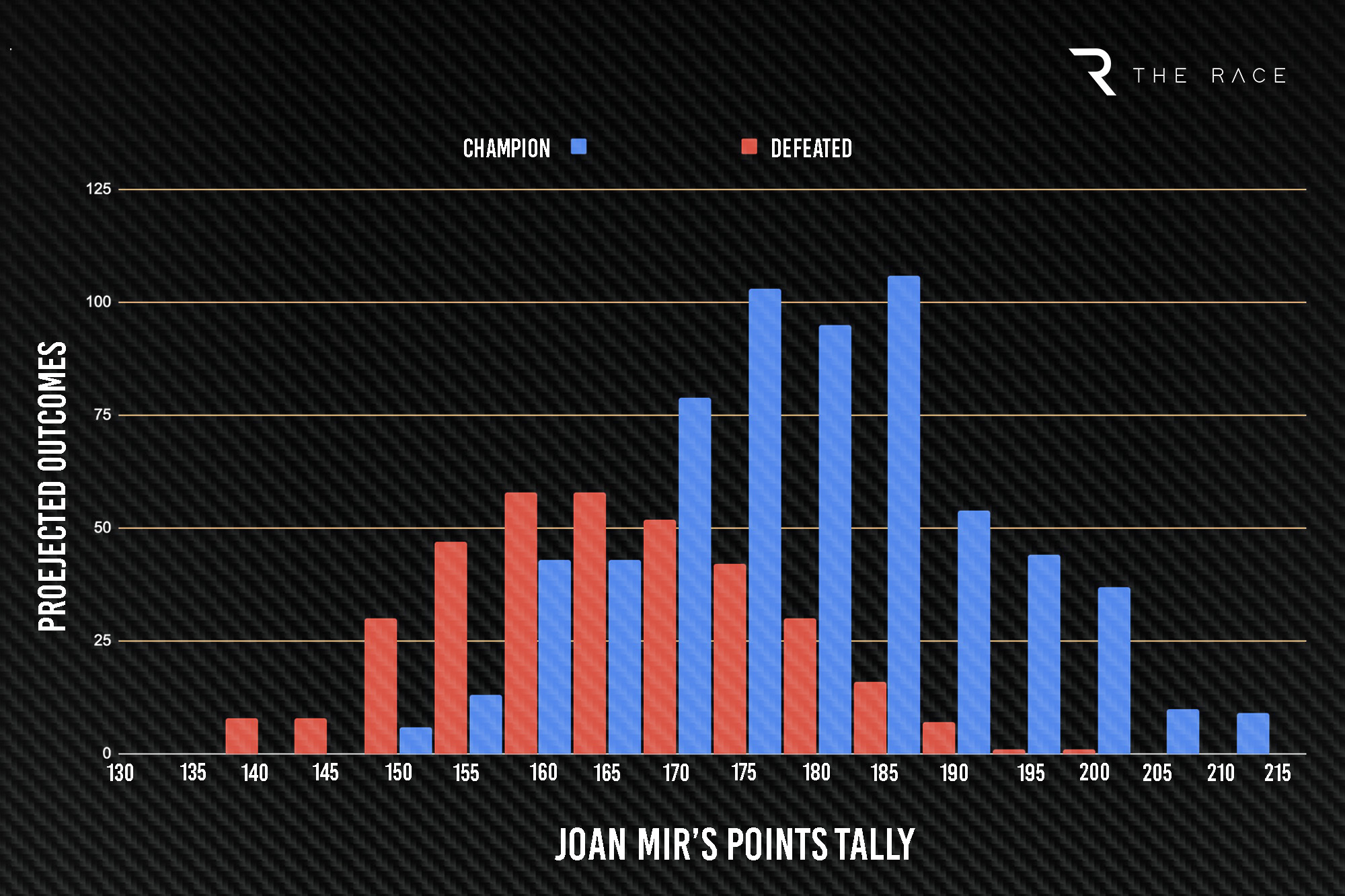
How many mulligans can Mir afford?
Staying on the bike has been a substantial building block of Mir’s title charge – he fell in the Jerez opener and got wiped out by Iker Lecuona at Brno, but has finished each of the eight races since. If you believe this is a pattern and he’s now less likely to crash than at the start of 2020, that’s a big argument to give him high title chances.
If Mir stays on the bike through Valencia and Algarve, that dramatically slashes his rivals’ routes to the title – even if the likes of Quartararo and Vinales have been no less reliable in seeing the chequered flag (which is partly why the model is keener on them than Morbidelli).
But even should Mir falter once, the model still has him more likely to prevail than his rivals combined, despite his buffer being likely to virtually evaporate. Now, two non-scores – that would be disastrous.
The model did also throw up seven outcomes in which Mir doesn’t add to his points tally at all, and in all of those he obviously loses – but that’s hardly a revelation. In real life, the only plausible way Mir can not add to his points tally but still win the title is if the races are called off, which isn’t outside the realm of possibility due to the current climate but can’t really be implemented into the model.
Does Mir need to win?
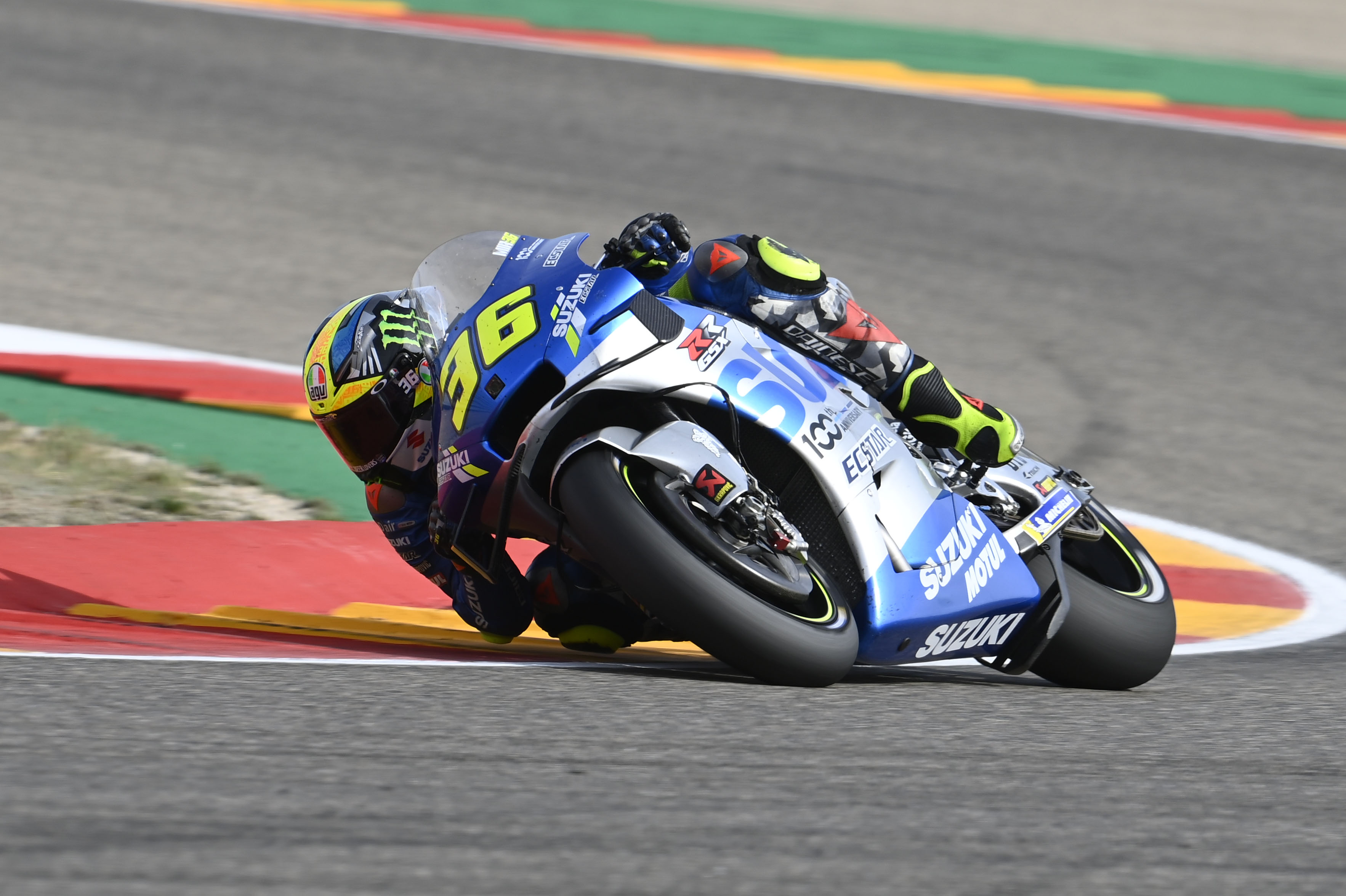
You should probably mentally prepare for the possibility of hearing the name Emilio Alzamora a few times in upcoming MotoGP broadcasts – and it won’t be because he’s Marc Marquez’s manager.
Alzamora, pictured below, won the 1999 125cc title (by one point over Marco Melandri) without claiming a single win, which Mir might just be on course to do now.

Model 2 has Mir finally claiming a maiden victory in just under a third of the total cases, compared to the slightly larger sample – just over a third – in which the Suzuki rider goes winless but takes the title anyway.
However, while he faces a 50/50 title split without wins, that improves to a 90% title rate with a win or more, so that’s certainly decent enough incentive.
It’s worth noting that, were you to attempt to calculate Mir’s chances of breaking his win duck in Valencia or particularly Portimao, it might be worth accounting for the possibility that Suzuki may at some point run a 1-2 with Alex Rins ahead, in which it would surely promote Mir if Rins were out of realistic title contention at that point – Rins himself having made it clear he’d be open to that, although you’d have to imagine his definition of realistic title hopes varies from Suzuki’s.

The model doesn’t account for that obviously, but neither does it account for any team tactics shenanigans at Ducati or particularly Yamaha, which should have much larger scope for actions like these as it his more bikes.
Now, is Mir likely to need another visit to the rostrum? Almost certainly, as the title only goes to him in about one of four simulations otherwise. However, given that Mir has stood on the rostrum in six of the last eight races, a sudden podium drought isn’t a massively likely scenario.
Who has their fate in their own hands?
We already spoke of Mir’s mathematical threshold – the only other rider who can boast of one is Quartararo, who will take the title whatever happens if he reels off three wins on the trot.
However, in every outcome produced in this sampling in which his Yamaha stablemates Vinales or Morbidelli score a hat-trick, they also become champions, which makes perfect sense as that would not leave Mir much margin for error at all.
All in all, Model 2 produces 46 hat-tricks in 1000 simulations – 4.6%, which does not sound like a lot (imagine if the chances of three consecutive wins in F1 were only 4.6%) but is actually probably too generous for MotoGP’s maddest season.
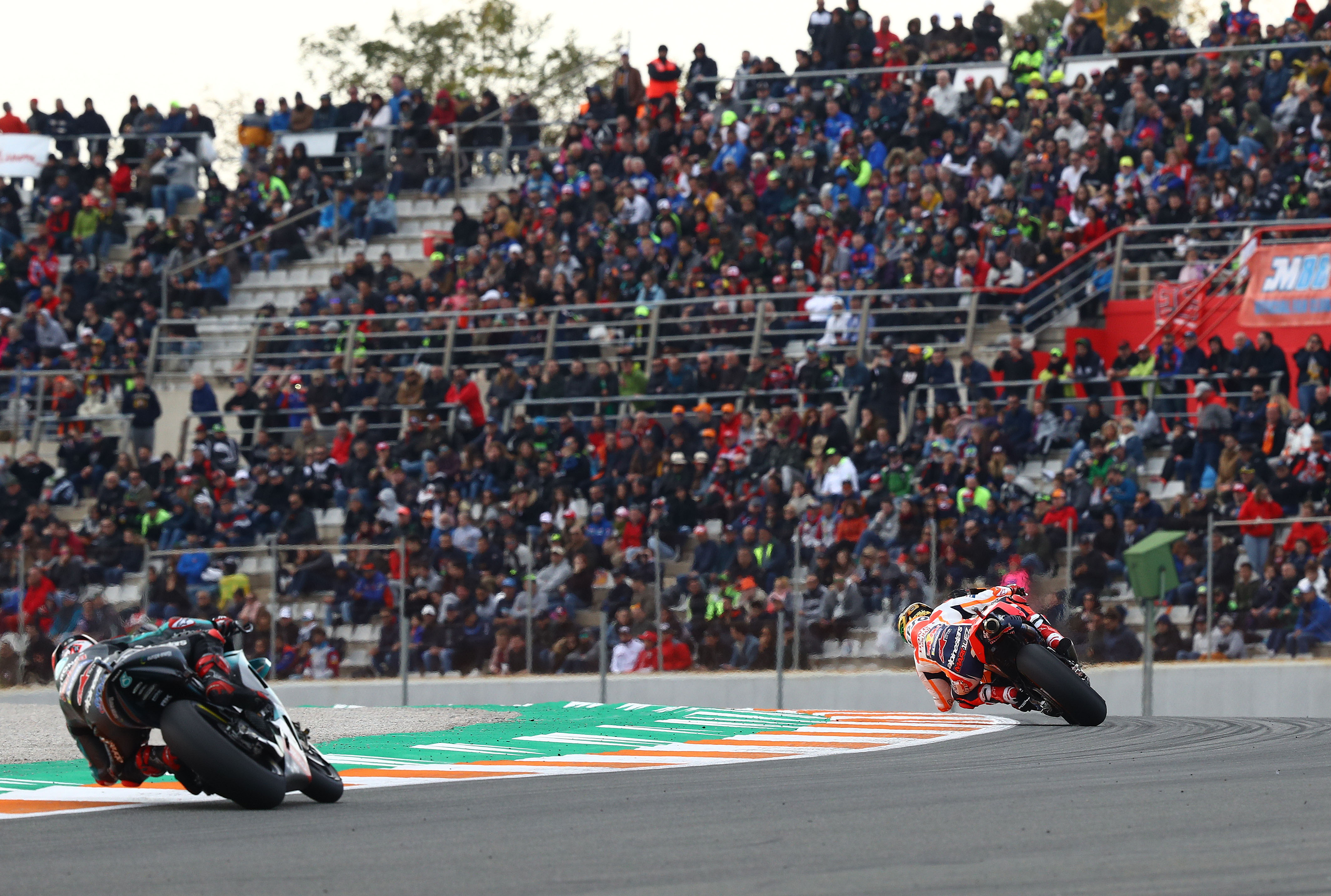
This is because the results of Valencia 1 and 2 are linked, which also leads to there being 43% of Valencia doubles in the 1000 simulations. This feels intuitively correct, in that whoever wins the first Valencia race would probably be a pretty strong favourite for the second race, and yet of MotoGP’s four double-headers in 2020 so far only Jerez was swept and none of the others looked anywhere near following suit.
Of the simulated Valencia sweeps, each of Mir’s proves good enough for the title, but so do 75 of Quartararo’s 99. The Frenchman finished second behind Marc Marquez at Valencia last year (above), so if you were to account for track-specific ability, he’s the first name that comes to mind as a candidate to do the double in the next two weekends, and it’s probably safe to predict that this would turn the tide of the title battle.
For what it’s worth, Vinales brings it home after a Valencia double in just under two thirds of cases, and Morbidelli in just over half, while Rins and Dovizioso tend to miss out even if they dominate at Ricardo Tormo.
Will the conclusion live up to the first 11 races?
It’s fair, however much stock you put in random simulated results, to say Mir is the majority favourite – a 16-point cushion is nothing to scoff at, Suzuki’s upward trend is clear to see and his own upward trend is clearer still. Win or no win, he’s put himself in a position where he would be an exciting MotoGP champion.
But, as the scenarios we’ve outlined show, just one fall throws it wide open, and if one of the Yamaha riders finds top form Mir is very vulnerable still. And realistically, any of them is capable – Quartararo and Vinales have shone at Valencia in the past, while Morbidelli was in the best shape of any of them leaving Aragon.
Both of our models have the average gap between the champion and runner-up at around 18 points – if that were replicated in real life, it would be the closest finish to a MotoGP season in five years. And in both, around four in every five simulations feature a last-race decider.
Make no mistake – the 2020 title race lives on.
The model doesn’t include the possibility of Valentino Rossi being sidelined for Garrett Gerloff, or the fact Iker Lecuona will miss the first Valencia race due to potential COVID-19 exposure.




